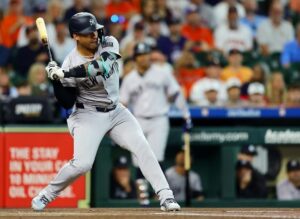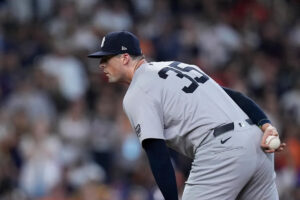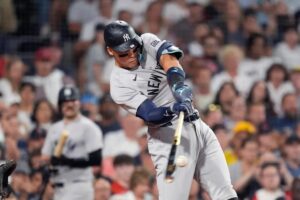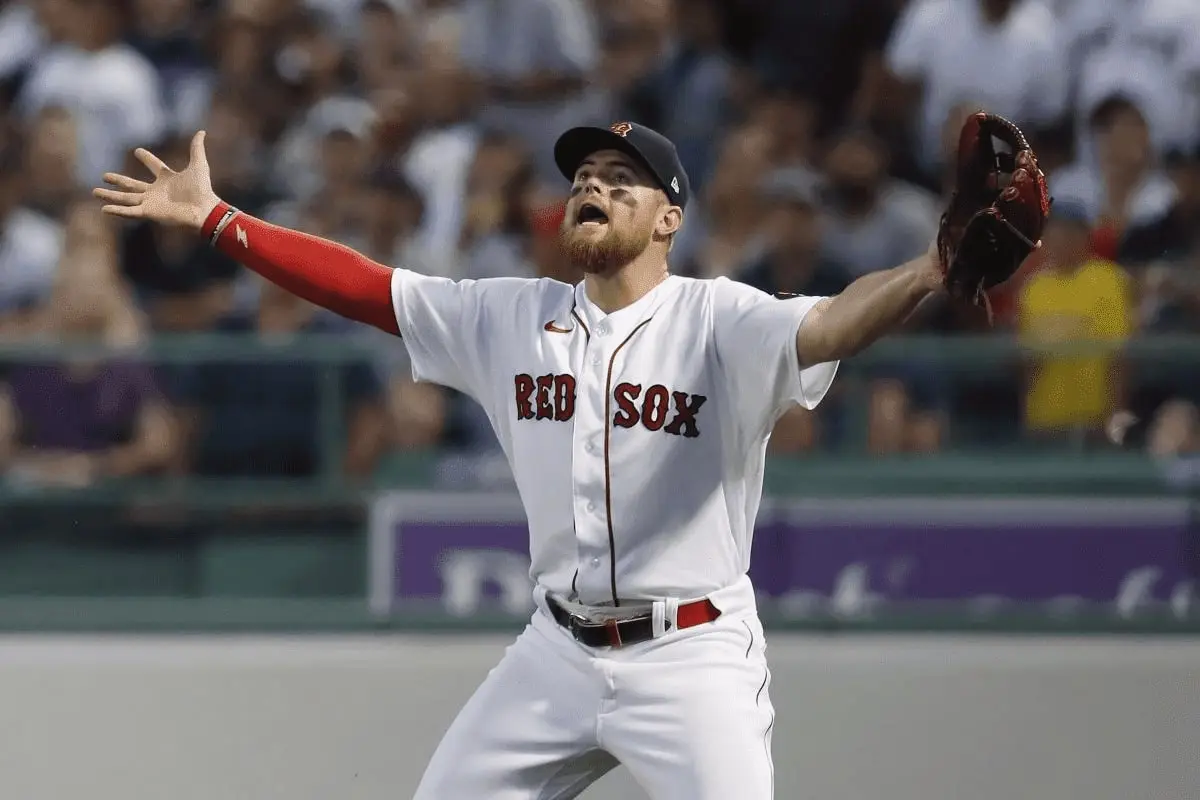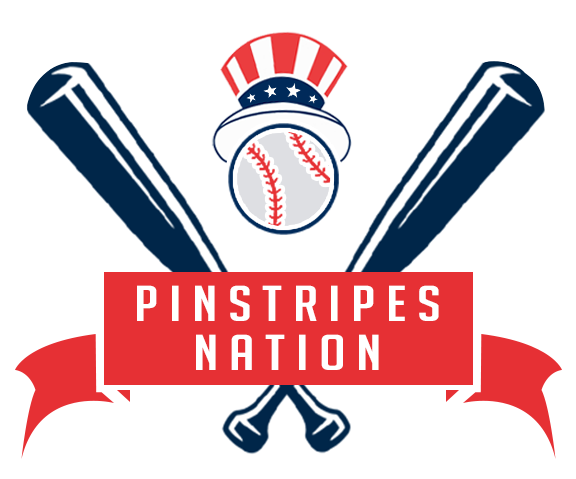Yankees’ flip-flop on Aaron Judge deepens their troubling imprint
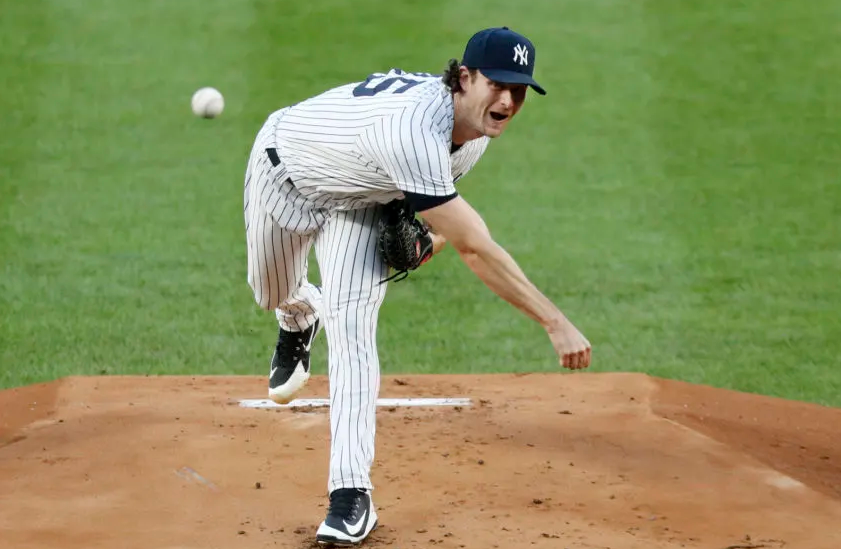
Michael Bennington
More Stories By Michael Bennington
- Mother’s Day: How Anthony Volpe’s mom molded him into a Yankee phenom
- Yankees’ Gleyber Torres shows signs of resurgence after slow start
- Late-game letdown: Clay Holmes dooms Yankees once more
- 470-Foot Bomb: Aaron Judge sets career record despite Yankees’ loss to Red Sox
- Giancarlo Stanton to rejoin Yankees for Phillies series opener on Monday
- July 27, 2023
- 9:29 am
- No Comments
Table of Contents
As the Yankees were getting ready for the Subway Series on Wednesday morning, multiple outlets reported that Aaron Judge would be back on Friday against the Orioles. During his pregame press conference, Yankees manager Aaron Boone refuted these claims, stating that there is currently no set plan to activate Judge on Friday. However, Aaron Judge returned to New York at night and the manager didn’t rule out a return on Friday.
The Yankees’ flip-flop on Aaron Judge continues since he was injured on June 3 while making an extraordinary catch. Despite being heavily dependent on him, the team is unable to clarify uncertainties around him leading to rumors and confusion among fans. As the Yankees are facing multiple uncertainties, their flip-flop only highlights the deepening of their troubles.
Yankees seem to be engulfed by chaos
They are wondering how long Aaron Judge will be out with his toe injury. They are also questioning how much longer their star-studded lineup can remain lackluster even in his absence. Moreover, they are pondering how long they can stay competitive in the competitive AL East and AL wild-card races without making significant changes. Finally, they are questioning how longer they can maintain their current team-building approach in the Bronx.
Regarding Aaron Judge’s potential return, there are conflicting reports. But the Yankees’ inability to clear the confusion over the reigning AL MVP is adding fire to the fuel. If he does return, it would undoubtedly boost the Yankees’ immediate prospects and make them more enjoyable to watch. However, Aaron Judge’s possible comeback highlights the larger issues that have surfaced during his absence.
For the second consecutive year, the Yankees’ offense has struggled while Aaron Judge has been sidelined. Since June 4, which marks the first game without Judge, New York’s offensive performance ranks 27th in the majors according to wRC+, a park-adjusted production metric. During this period, the veteran players expected to support Judge have been off their game. Anthony Rizzo‘s batting average stands at .175/.285/.241 (53 wRC+), Giancarlo Stanton has hit eight home runs but little else (77 wRC+), and DJ LeMahieu, a former batting champ, has only managed a lackluster .212 batting average (71 wRC+). This situation feels like a repeat of last summer’s slump, just without Judge’s presence to hold things together.
The recurring issue has caused significant concern within the Yankees’ front office. Brian Cashman, the long-serving GM with four World Series rings to his name, had never before fired a coach midseason. However, earlier this month, he made the unprecedented decision to dismiss hitting coach Dillon Lawson and appointed Sean Casey as his replacement for the remainder of the season. This unusual move reflects the level of anxiety and urgency to address the team’s hitting woes.
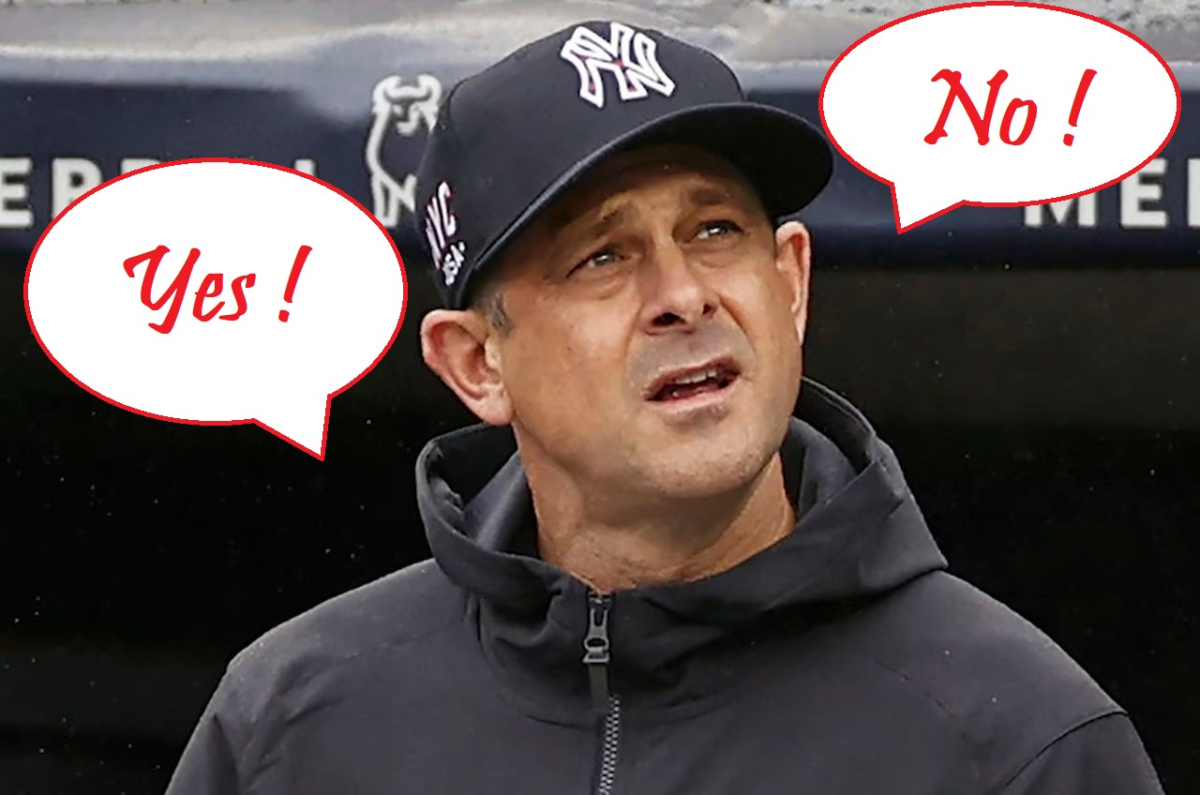
Blaming hitting coaches for the team’s struggles is a common practice in baseball, but evaluating their impact can be challenging from an external perspective. Dillon Lawson, who climbed the ranks within the organization without professional playing experience, played a pivotal role in promoting a mantra for the Yankees: “Hit strikes hard.” However, his recent dismissal indicates that the team is seeking solutions to their ongoing hitting issues.
Sean Casey, a renowned former All-Star with a reputation for being amiable, had no prior experience coaching at the major league level before assuming this role. He stressed that each hitter is unique, but his approach to coaching might resonate with what the team has encountered before.
Paul O’Neil, Sean Casey & Aaron Boone talkin strategy pic.twitter.com/QUsfGPESsZ
— Niki Lattarulo (@NikiLattarulo) July 26, 2023
Sean Casey emphasized the importance of controlling the zone and hunting pitches within the zone during an interview with the New York Post after his hiring.
Performance woes continue for the Yankees
As expected, the coaching change didn’t immediately lead to improved results. However, it served as a signal that both Cashman and team owner Hal Steinbrenner might be growing less confident in the future prospects of a core group that has consistently made the playoffs since a strategic sell-off in 2016.
Before diving deeper, it’s important to acknowledge some essential points: Cashman has proven himself repeatedly, and most MLB teams would envy the Yankees’ achievements, including two 100-win seasons, a 99-win season, and two ALCS appearances since Aaron Boone became the manager in 2018. Additionally, many teams would be eager to have access to the Yankees’ impressive pitching development pipeline.
While not reaching the World Series and facing setbacks against the Astros can be frustrating, it’s an inherent aspect of the game. What becomes more concerning is their position in the division and the league, with a growing number of agile competitors. The real issue lies in the missed chances and reluctance to reinvent or rejuvenate a formula that seems to be nearing its expiration date, making their situation all the more precarious.
Over the last five years, the Yankees have made gestures towards prioritizing the development of young talent, mirroring the successful approach adopted by the Los Angeles Dodgers—a model many teams, including their crosstown rivals, the New York Mets under Steve Cohen, aspire to emulate. While the Yankees don’t explicitly state it, their actions reflect a level of restraint, even with their significant investments in retaining Judge and acquiring stars like Gerrit Cole and Carlos Rodón. This balance between spending and nurturing young prospects is a source of pride for the organization.

During this period of restraint, one of the most notable instances was their careful handling of Anthony Volpe‘s development, avoiding major signings at shortstop to allow him room to progress. However, their hesitance became evident through a series of missed opportunities: potential pursuits of stars like Freddie Freeman, Nolan Arenado, Corey Seager, George Springer, and Manny Machado. The Yankees were often linked to these high-level talents, but they either faltered in their pursuit or chose to step back from making aggressive moves.
During this period, the Yankees have granted plate appearances to hitters in their age-32 seasons or older, putting them among the top two teams in doing so. While this is not an issue in itself if your seasoned players include elite stars like the Dodgers’ Mookie Betts and Freddie Freeman, it becomes concerning when your veterans face challenges in terms of durability (Giancarlo Stanton) or are showing signs of declining performance as they approach the latter stages of their careers (Josh Donaldson).
As Judge approaches the 32-and-up age group next year, the front office faces a decision on whether to acquire temporary aid like Randal Grichuk for the current season. However, it would be wise for them to also consider acquiring more long-term and reliable supporting players.
While it may be tempting to compare the Yankees to big spenders like the Mets and Padres and criticize their exorbitant budgets, the real issue seems to be a lack of ambition rather than excessive spending. Alternatively, it appears that the Yankees may have hindered themselves by spreading their investments across various riskier options instead of fully committing to one clear strategy.
Consistently chasing a championship while also following a less traditional player-acquisition approach, the Yankees have been addressing roster gaps by bringing in players who are past their prime or providing only partial solutions. They look forward to the day when a wave of young talent emerges, reminiscent of the Core Four era. While some of these short-term solutions worked temporarily, they have collectively led to a lingering feeling of inconsistency and concern for the future. This puts added pressure on prospects like Volpe, Peraza, and Dominguez to bear the burden of turning things around on their own.
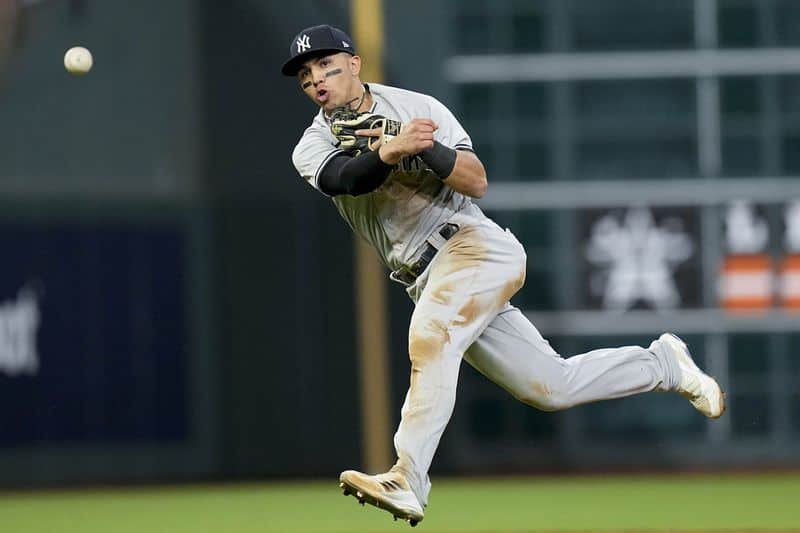
In the meantime, the group of established stars that the Yankees hesitated to pursue has shown impressive performances compared to the team’s eventual choices. In the past, the Yankees excelled at acquiring players aged 29 and above, and some of the best talents in that category are becoming costly, nearing free agency, or facing circumstances that could lead to them switching teams. Since the beginning of 2021, Judge has been the standout performer within this group, but the Yankees have not enlisted any other player from the top 30 in that category.
Had the Yankees made a bold move, akin to the traditional actions of their late owner, George Steinbrenner, by acquiring any of those stars, it could have reduced the team’s heavy reliance on Judge. Such a move likely wouldn’t have hindered the progress of prospects like Volpe or other young hitters, provided the organization was genuinely committed to giving them enough playing time. Additionally, it might have instilled more confidence in dealing with injuries and performance slumps among the team and its players.
While it is undeniable that successful baseball teams need more than just top-tier players, the Yankees should seriously consider revisiting their strategy and aim to acquire superstar talent once again.
What do you think? Leave your comment below.

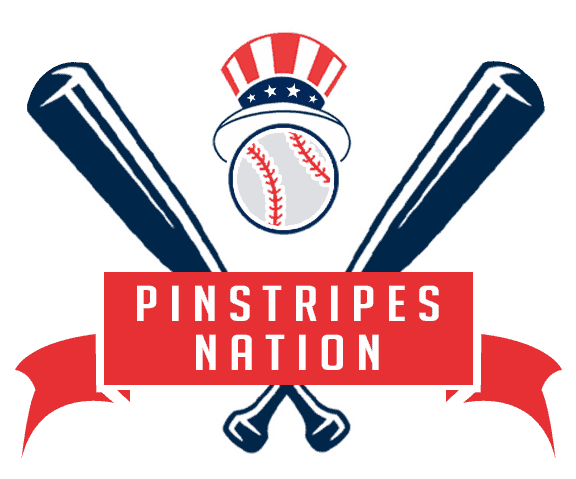
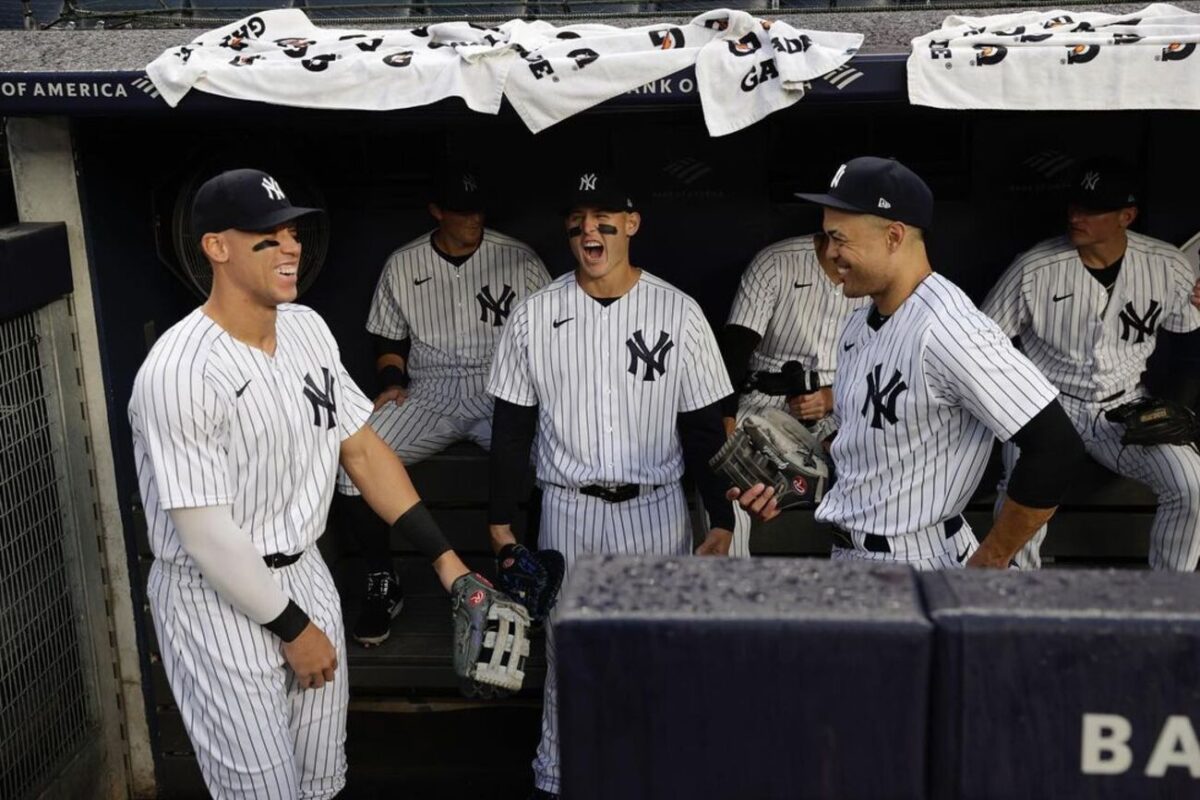
 Follow Us
Follow Us